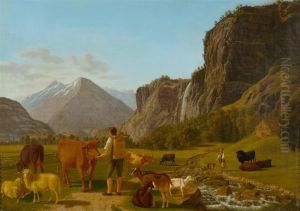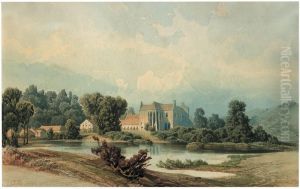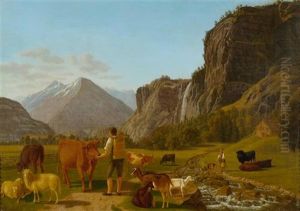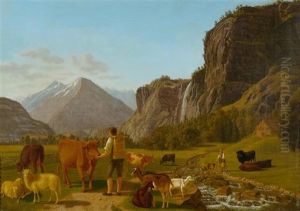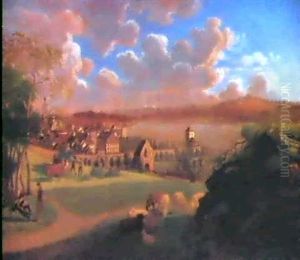Emanuel Rudolf Biedermann Paintings
Emanuel Rudolf Biedermann was a Swiss painter, renowned for his exquisite landscape paintings, capturing the essence of the Swiss Alps and the country's bucolic countryside. Born on July 28, 1834, in Winterthur, Switzerland, Biedermann was introduced to the arts at an early age, showing an early inclination towards painting and drawing. His artistic journey began in earnest when he decided to pursue his passion for art as a career, a decision that led him to study at various prestigious art institutions across Europe.
Throughout the 1850s and 1860s, Biedermann traveled extensively, drawing inspiration from the diverse landscapes and the luminous quality of light he observed in Italy, France, and Germany. These travels were crucial in shaping his artistic style, which was characterized by meticulous attention to detail, vibrant colors, and a remarkable ability to capture the changing moods of nature. Biedermann's paintings often depicted serene scenes of the Swiss countryside, majestic alpine vistas, and tranquil lakes, reflecting his deep appreciation and love for his homeland.
Biedermann's work received considerable acclaim during his lifetime, and he was celebrated for his contributions to Swiss art. He exhibited his paintings in numerous exhibitions across Europe, earning praise for his technical skill and his ability to evoke emotion through his landscapes. Despite his success, Biedermann remained deeply connected to his Swiss roots, and his paintings continued to celebrate the natural beauty of Switzerland throughout his career.
Emanuel Rudolf Biedermann passed away on November 25, 1892, leaving behind a legacy that has continued to influence Swiss landscape painting. His works are preserved in several art museums and private collections, where they are admired for their beauty and historical value. Biedermann's dedication to capturing the essence of the Swiss landscape has made him a beloved figure in Swiss art history, and his paintings continue to inspire artists and art lovers around the world.
